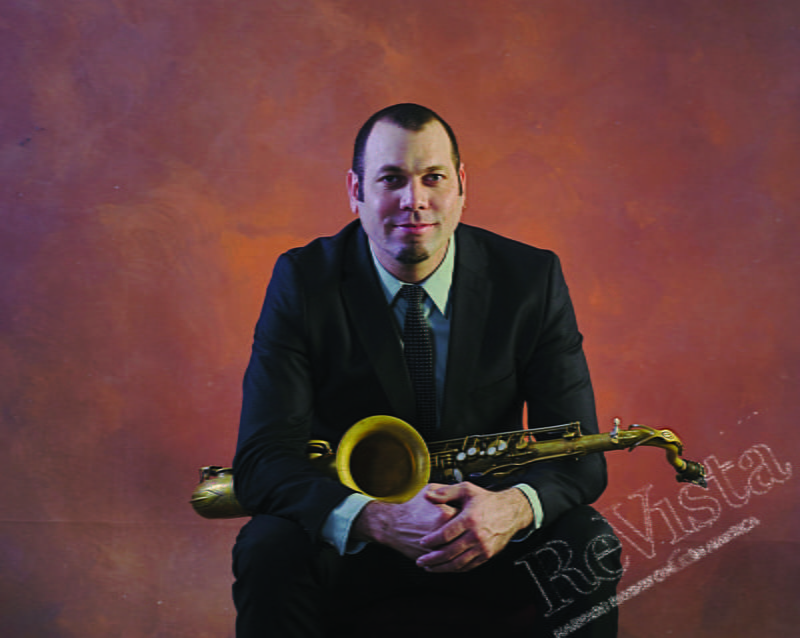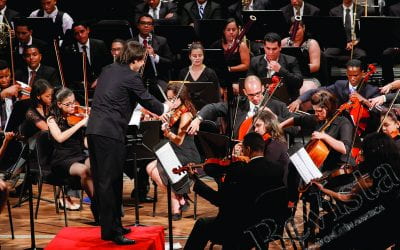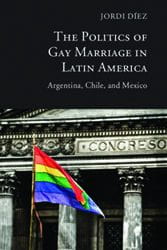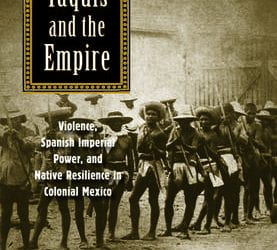Musical Identity
Looking for a Sound Between Two Oceans
Frankly, I’m not used to talking about myself, and even less writing about myself. My way of expressing myself has been through musical notes, whether the buoyant Cuban clave rhythms or the equally ebullient American swing.
I’m a Cuban saxophone player, composer and teacher. Ever since I was a kid, music has been my reason for living. Maybe even before. If it’s true that babies hear things from inside the womb and absorb those sounds, my dad’s saxophone playing formed an integral part of that gestation. Carlos Averhoff Sr. is a Cuban saxophone player who played with Irakere, the prestigious jazz band of Cuban pianist Chucho Valdés. From early on, my dad ingrained in me the tenacity, discipline, unflagging rigor and the conviction that only long and tireless hours of study could help me achieve musical excellence.
But as life and Cuban reality would have it, my father left the island when I was barely a teenager. In his absence, I became a man. I became a musician while he was in a faraway place—in a world unconnected by Skype and Internet. But even so with his help I discovered the American jazz greats through the cassette tapes he sent me from Miami with people traveling to the island. I analyzed them in an almost scientific manner in great detail, dissecting each note, every arpeggio and every phrase. Like me, many Cuban musicians educated themselves in the language of jazz a fuerza de guataca—by the sheer effort of listening.
My pedigree, if you could call it that, was involuntary. At home, I grew up imbued with music, for reasons beyond my control. One could almost call it inertia. The country of my birth also shaped me, since Cubans can hardly escape from the all-encompassing music of the island. Music forms us, shapes us, gives us our identity. My musical training, academically speaking, took place in Cuban state-run schools: the Manuel Saumell Music Conservatory, the Amadeo Roldán school and for a short time, the Higher Institute for the Arts. My initial training focused on the classical genre and I began playing the alto saxophone.
I remember that period fondly. It’s well known that artistic training in Cuba is outstanding. But perhaps it’s not as well known that the dynamics between teacher and student is one of respect and rigor—at least within the arts. The student is a faithful devotee of the words and instruction of his or her teacher, and the effort made in and beyond the classroom is unquestioned. Cuban teachers of this period—Juan Felipe Tartabul, Francisco Javier Lara, Javier Salva and Jorge Luis Almeida—made me shed a lot of tears, but evoked just as many smiles.
Through another stroke of luck, at the age of 19, I held in my hands a tenor saxophone. My school had been invited to Canada on a cultural exchange and they needed a tenor saxophone player. And although I play other types of saxophones, this was the moment of truth for me. I found myself, my voice, in the tenor saxophone. It brought together everything about who I am, my temperament, my voice, my personality, my identity. And precisely in search of that identity and voice, I left the island a little more than a decade ago. The desire to study the language of American jazz in its purest and strictest essence brought me to Boston, where I received a scholarship from Berklee College of Music. I finished up my studies there with honors and continued the following year to study for a Master’s degree at the New England Conservatory of Music (NEC). These were years of sacrifice and challenges, but above all, years of constant discovery.
During my classes with renowned teachers in these institutions, I began to understand that without doing the homework of studying the underpinnings and the fundamental keys of the language of American jazz, one could not even begin to create fusion. Without understanding history, one could not generate new sounds. It would be like constructing a building without cement. At Berklee, great teachers and friends like Ed Tomassi, George Garzone, Frank Tiberi, Bill Pierce and one of my greatest influences, Greg Osby, led me to explore the genre from the essence of swing to improvised jazz or so-called Free Jazz. Later, Jerry Bergonzi, whom I had admired from a distance in Cuba, was one of those teachers who, while I studied for my Master’s degree at NEC, consolidated my inspiration and knowledge, enabling me to search and develop my own sound.
Undoubtedly, we’re all products of our early years—the experiences of childhood and adolescence shape our routes. But what defines us? At home, there was always the hunger to study pure jazz that led me to explore beyond Cuban music and to look, across other waters, how to create my own musical language.
My music emerges from my lived experiences as a Cuban, as an immigrant, as a student of American jazz and as an admirer of Afro-Cuban traditions. With my ensemble iRESI—named after a Yoruba word that means the spirit of each human being—I try through musical notes to develop a sound, a focus and a distinctive identity. The compositions in my first album—also entitled iRESI—have been nourished by an amalgam of influences: contemporary and vanguard jazz, classical music and Afro-Cuban rhythms, as well as the timba, a dance genre that emerged in the 1990s. Together, they make up a musical knowledge that reflects the very essence of my creation and artistic expression.
Asking myself how to fuse elements of the two cultures—the Cuban and the American—I’ve developed a new musical technique, Melodic and Rhythmic Independence (M.A.R.I.), bringing together an interactive and percussion technique to my composition and performance. To execute it, I play a percussion instrument with my left foot, while at the same time I interpret melodic phrases on the saxophone. Through M.A.R.I. I attempt to blend the colors and traditional sound of the Cuban clave and other African rhythms into my music without distorting the typical sound of a jazz quartet.
How does a musician create when his own identity has undergone the process of emigration? How did I find my musical identity? I believe that discovering one’s own identity is a matter of perseverance and patience. Jazz critics say that my music navigates between two waters—that it fuses traditional Cuban music with contemporary jazz. They describe my music as ingenious, passionate, mystical, daring, visionary, visceral, expressive and majestic. Those are their words. I play what I feel, and what I have created as a result of this long process of blended identities. When you hear my music, you can form your own opinions. I invite you to listen.
Identidad Musical
La búsqueda de un sonido entre dos aguas
Por Carlos Averhoff Jr.
Permítanme comenzar por mencionar que no acostumbro a hablar de mí mismo. Mucho menos a escribir y expresarme con palabras. Mi forma de expresión, inclusive en los silencios, son las notas musicales. Pero, allá vamos: al ritmo de clave cubana y de Swing americano.
Mi nombre es Carlos Averhoff, Jr. Soy un músico cubano. Soy saxofonista, compositor y educador. Mi vida, desde que tengo uso de razón, ha sido la música. Y quizás inclusive desde antes. Si es real lo que se dice que desde el vientre de la madre se escuchan y se interiorizan sonidos, pues entonces la música también formó parte de mi gestación. Acompañado del eco de cuando se escuchan sonidos bajo el mar, me llegaba el saxofón de mi padre, Carlos Averhoff. Mi padre, también saxofonista cubano que durante su carrera tuvo el privilegio de compartir escenario como miembro integrante de la prestigiosa orquesta de Jazz del pianista cubano Chucho Valdes Irakere, inculco en mí el tesón, la disciplina, el rigor más implacable y la certeza que solo largas e incansables horas de estudio, rinden logros.
Por sinsabores de la vida y de la realidad cubana, mi padre dejó la isla en mi adolescencia temprana. Me hice hombre en su ausencia. Me hice músico con él en la distancia. Pero con su ayuda descubrí a los grandes maestros del Jazz analizando minuciosamente y con una curiosidad casi científica, diseccionando cada nota, cada arpegio y cada frase, los casette tapes que me enviaba de grabaciones de músicos americanos. Como yo, muchos musicos cubanos nos educamos en el idioma del Jazz a fuerza de guataca u oreja – como diríamos en Cuba.
Mi pedigrí, por así llamarlo, fue involuntario. En el seno del hogar crecí en la música, por razones ajenas a mi control. Se podría decir que casi por inercia. El país que me dio cuna, también me formó, pues para el cubano es inevitable escaparse de la música. La música nos forma, nos moldea, nos da nuestra identidad. Mi formación musical, académicamente hablando, tuvo lugar en las escuelas estatales de la isla: el Conservatorio de Música Manuel Saumell, la escuela Amadeo Roldan y por poco tiempo, el Instituto Superior de Arte. Mi entrenamiento inicial fue fraguado dentro del género del clásico y el instrumento que desarrolle en ese entonces, fue el saxofón alto.
Los recuerdos de esa época son muchos y gratos. Se sabe que la educación artística en Cuba es ejemplar. Pero tal vez no tanto que la dinámica alumno-maestro es puramente de respeto y rigor – al menos dentro de las artes. El estudiante es un fiel devoto de la palabra y el conocimiento del pedagogo, y el esfuerzo en el aula y fuera de la misma, es incuestionable. A mis maestros cubanos de esa época, los señores Juan Felipe Tartabul, Francisco Javier Lara, Javier Salva y Jorge Luis Almeida les debo lágrimas, sí, pero igualmente muchas sonrisas.
También por un juego del destino a la edad de 19 años tome en mis manos el saxofón tenor. Mi escuela había sido invitada a Canada a un viaje de intercambio cultural entre estudiantes y necesitaban un tenorista. Desde entonces no ha habido retorno, aunque toco otros saxofones. En el tenor encontré mi identidad, mi voz. En él se materializa quien soy, mi temperamento y personalidad. Y buscando precisamente una identidad y una voz, dejé la isla hace poco menos de una década. El deseo de estudiar el lenguaje del Jazz americano en su esencia más pura y estricta, me trajo a Boston donde se me otorgó una beca en Berklee College of Music. Allí culminé mis estudios con honores para continuar, al año siguiente, los estudios de maestría en el New England Conservatory of Music (NEC). Años de sacrificio y retos, pero sobre todas las cosas, años de descubrimientos.
Fue durante mis clases con renombrados pedagogos del género que entendí que sin “hacer la tarea” de estudiar la base, y cementar fundamentos claves del idioma del Jazz americano, no se puede pretender hacer fusión. Sin ahondar en la historia no se pueden generar nuevos sonidos. Seria como construir un edificio sin cimientos. En Berklee, grandes maestros y amigos como Ed Tomassi, George Garzone, Frank Tiberi, Bill Pierce y una de mis influencias, Greg Osby, me llevaron a explorar desde la esencia del Swing hasta la libertad jazzística o el llamado Free Jazz. Luego, Jerry Bergonzi, a quien admiraba desde Cuba, fue uno de los maestros que mientras estudiaba mi postgrado en NEC, solidifico mi inspiración y conocimiento para buscar y desarrollar un sonido propio,.
Indudablemente todos somos productos de nuestra infancia. La cultura que nos vio nacer, por la que anduvimos durante los pasos formativos, esas experiencias de la niñez y la adolescencia, guían caminos, ¿pero definen? En mi caso fue mi hambre por estudiar el lenguaje del Jazz puro lo que me llevo a explorar mas alla de la musica cubana y buscar, por otras agua, cómo hacerme de mi propio idioma musical.
Mi música es un resultado de mis vivencias como cubano, como inmigrante, como estudiante del Jazz americano, quien a su vez es un fiel admirador de las tradiciones afro-cubanas. Con mi ensemble iRESI, trato con notas musicales de desarrollar un sonido, un enfoque y una identidad distintiva. Las composiciones en mi primer album como lider, tambien titulado iRESI, se han nutrido de una amalgama de influencias: el Jazz contemporáneo y de vanguardia, la música clasica y afrocubana, y la Timba, genero danzable surgido en los noventa. En ellas pretendo resumir conocimientos que me han tocado hasta la fibra de la creación y de la expresión artística.
Indagando como compenetrar elementos de las dos culturas – la cubana y la americana – he desarrollado una nueva técnica musical. Por sus siglas en inglés – M.A.R.I. Melodic and Rhythmic Independence – incorpora un elemento interactivo y percutivo a mi interpretación y composicion. Para ejecutarla toco un instrumento de percusion menor con mi pie izquierdo, mientras simultáneamente interpreto frases melódicas con el saxofón. Con la incorporación de M.A.R.I. intento agregar colores y sonoridad tradicional al llevar la clave cubana y otros ritmos africanos a mi música, sin intervenir con el sonido del tipico quarteto de Jazz.
¿Cómo crea un músico que emigra su identidad? ¿Dónde encontré yo la mía? En mi opinion, descubrir una identidad propia lleva perseverancia y paciencia. Criticos de Jazz dicen de mi musica que navega por dos aguas – que funde la tradición cubana y el Jazz contemporáneo. La describen como ingeniosa, apasionante, mística, audaz, visionaria, visceral, expresiva y majestuosa. Solamente al oírla podrá usted crear su propia opinión. Queda, a través de estas, invitado.
Winter 2016, Volume XV, Number 2
Carlos Averhoff Jr. is a Cuban saxophone player, composer and teacher. He graduated with honors from the Berklee College of Music and the New England Conservatory of Music. His first album as leader of the musical group iRESI received critical acclaim. www.averhoffjr.com
Carlos Averhoff Jr. es un saxofonista cubano, compositor y pedagogo. Se graduó con honores de las escuelas Berklee College of Music y el New England Conservatory of Music. Su primer álbum como líder iRESI, palabra Yoruba que significa la luz o espíritu de cada ser humano, explora sus raíces afrocubanas al mezclarlas con el sonido contemporáneo del Jazz de vanguardia. Aclamado por la crítica, la música de Carlos es un testimonio de su exploración personal y su genio como compositor e interprete. www.carlosaverhoffjr.com
Related Articles
When Music Changes Lives
English + Español
n 2004, I got a surprising phone call from Santo Domingo on one cold winter night. I was then studying musical composition in Strasbourg, France, a great opportunity for a young Dominican…
The Politics of Gay Marriage in Latin America
Despite its recent successes, the gay rights movement in Latin America is generally ignored in discussions of contemporary Latin American politics. Even students of Latin American social…
The Yaquis and the Empire
Winner of the 2015 Latin American Studies Association Social Science Book Award and runner-up for the 2015 David J. Weber-Clements Prize of the Western History Association, The Yaquis…





